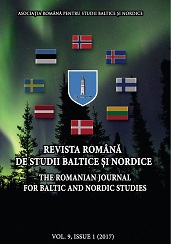The identities of the Catholic communities in the 18th century Wallachia
The identities of the Catholic communities in the 18th century Wallachia
Author(s): Alexandru CiocîltanSubject(s): History, Cultural history, Modern Age
Published by: Asociatia Romana pentru Studii Baltice si Nordice
Keywords: Catholic communities; Wallachia; Saxons; Bulgarians; Paulicians; Armenians
Summary/Abstract: The Catholic communities in the 18th century Wallachia although belonging to the same denomination are diverse by language, ethnic origin and historical evolution. The oldest community was founded in Câmpulung in the second half of the 13th century by Transylvanian Saxons. At the beginning of the 17th century the Saxons lost their mother tongue and adopted the Romanian as colloquial language. Other communities were founded by Catholic Bulgarians who crossed the Danube in 1688, after the defeat of their rebellion by the Ottomans. The refugees came from four market-towns of north-western Bulgaria: Čiprovci, Kopilovci, Železna and Klisura. The Paulicians, a distinct group of Catholics from Bulgaria, settled north of the Danube during the 17th and 18th centuries. The homeland of this group was the Nikopolis region. Their ancestors, adherents of a medieval heresy, had been converted by Franciscans friars. Bucharest, the capital city of Wallachia, housed a composite Catholic community of distinct origins, which came into being during the last quarter of the 17th century. In this community the Catholic Armenians became predominant by the mid-18th century. The main object of our study is the history of the Catholic communities in a predominant Orthodox country under Ottoman rule.
Journal: Revista Română de Studii Baltice şi Nordice
- Issue Year: 9/2017
- Issue No: 1
- Page Range: 71-82
- Page Count: 12
- Language: English, Romanian

